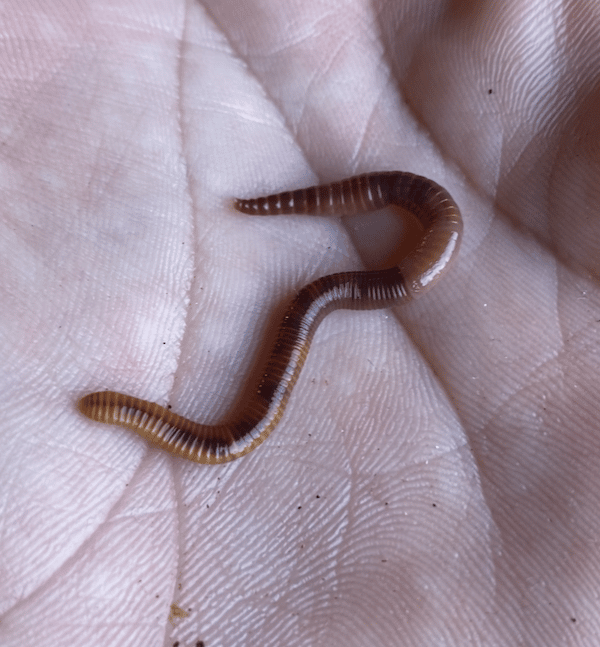Understanding the Conveniences of Red Wiggler Composting: Exactly How This Effective Technique Changes Organic Waste Into Nutrient-Rich Soil Amendments
Red Wiggler composting, utilizing the species Eisenia fetida, offers a compelling strategy to organic waste management, converting cooking area scraps and yard debris into important soil modifications. This approach not just enhances soil fertility however also addresses pushing environmental worries, including land fill waste decrease and greenhouse gas discharges.
What Are Red Wigglers?
Red wigglers, scientifically called Eisenia fetida, are a varieties of earthworm that play a pivotal role in vermicomposting systems. These worms are characterized by their reddish-brown shade, fractional bodies, and a distinctive capability to grow in organic-rich atmospheres, making them ideal for composting applications - Red Wiggler Composting. Unlike their garden-dwelling counterparts, red wigglers like to occupy the top layers of dirt, where decomposing matter is plentiful
Generally determining in between 3 to 4 inches in length, red wigglers have a high reproductive price, allowing them to multiply quickly under optimum problems. They have an unique gastrointestinal system that enables them to refine natural waste effectively, converting it right into nutrient-rich castings, which are highly valuable for plant development.
Their resistance to varying wetness levels and temperature level varies better boosts their energy in vermicomposting configurations, making them a preferred choice among composting enthusiasts. Furthermore, red wigglers are aerobic organisms, which requires a well-aerated composting environment, making sure reliable decomposition. Comprehending the biological characteristics and behaviors of red wigglers is essential for enhancing their use in lasting waste monitoring methods.

Benefits of Vermicomposting
Using the power of vermicomposting deals a wide variety of environmental and farming advantages. It significantly minimizes natural waste in garbage dumps, thereby decreasing methane emissions, a powerful greenhouse gas. By drawing away food scraps and lawn waste to vermicomposting, we sustain an even more sustainable waste administration system.
Additionally, vermicomposting enhances dirt health and wellness. The spreadings generated by red wigglers are rich in essential nutrients, microbes, and enzymes, enhancing soil framework and fertility. This nutrient-rich amendment advertises robust plant development and enhances water retention, minimizing the need for chemical plant foods.
Additionally, vermicomposting fosters biodiversity in the soil environment. The introduction of advantageous microbes from worm spreadings help in illness suppression and nutrient cycling, producing a much healthier atmosphere for plants.
Financially, vermicomposting reduces the costs connected with chemical inputs and garbage disposal. Farmers and garden enthusiasts can grow high-quality fruit and vegetables at lower expenses, adding to food safety and sustainability.
Just How to Start Composting
Starting a composting venture can be a gratifying and uncomplicated procedure. This will assist keep a balanced temperature level, essential for the composting procedure.
Gather natural products such as cooking area scraps, backyard waste, and shredded paper. Go for a balanced mix of 'environment-friendly' products, high in nitrogen (e.g., fruit scraps, coffee premises), and 'brown' materials, rich in carbon (e.g., dried out leaves, cardboard) A ratio of roughly 2:1 green to brownish materials is suitable.
Beginning layering your materials, making certain sufficient air circulation by transforming the stack routinely. This advertises cardiovascular disintegration, speeding up and decreasing odors up the process. Screen wetness levels; the compost should really feel like a damp sponge yet not excessively wet.
Nutrient Profile of Vermicompost
Composting, especially with red wigglers, produces a nutrient-rich product called vermicompost. This natural change is differentiated by its high concentration of necessary nutrients, making it a very useful resource for gardening and farming. Vermicompost typically contains elevated This Site degrees of macronutrients such as phosphorus, nitrogen, and potassium, which are important for plant growth. In addition, it provides micronutrients like magnesium, calcium, and iron, cultivating durable plant advancement and boosting dirt health and wellness.
The microbial activity existing in vermicompost additionally improves its account, presenting advantageous bacteria and fungis that advertise nutrient availability and uptake in plants. This organic element aids in reducing plant illness and enhancing dirt framework, bring about boosted water retention and aeration.

Environmental Influence of Composting
The environmental effect of composting, especially with the usage of red wigglers, is diverse and profound. This technique considerably minimizes the quantity of organic waste sent to landfills, which consequently decreases greenhouse gas discharges, particularly methane-- a powerful factor to environment modification. By diverting natural products from land fills, red wiggler composting not only assists minimize ecological destruction yet additionally advertises sustainable waste administration techniques.

Furthermore, composting adds to carbon sequestration, as the process catches carbon dioxide from the atmosphere and shops it in the soil. This natural procedure aids in combating climate adjustment while improving the dirt - Red Wiggler Composting. Overall, red wiggler composting provides a practical, environmentally friendly remedy for waste management and ecological sustainability, advertising healthier environments and an extra sustainable future
Conclusion
Finally, Red Wiggler composting functions as an effective technique for converting natural waste right into beneficial soil changes. The procedure not just improves dirt fertility and framework but likewise reduces ecological concerns related to waste disposal. By using Eisenia fetida, this form of vermicomposting adds to boosted biodiversity and supports sustainable agricultural practices. Inevitably, Red Wiggler composting plays a crucial role in promoting healthier ecological communities and resolving the difficulties of climate modification.
Red Wiggler composting, utilizing the species Eisenia fetida, presents an engaging technique to natural waste administration, converting cooking area scraps and backyard particles right into valuable dirt amendments. Unlike their garden-dwelling counterparts, red wigglers prefer to populate the upper layers of dirt, where rotting issue is bountiful.
The spreadings generated by red wigglers are rich in necessary nutrients, microbes, and enzymes, improving soil structure and fertility. The nutrient-rich byproducts of red wiggler activity improve soil structure, increase water retention, and advertise biodiversity within the dirt ecosystem.In final thought, Red Wiggler composting offers as a reliable approach for converting natural home waste into valuable dirt modifications.